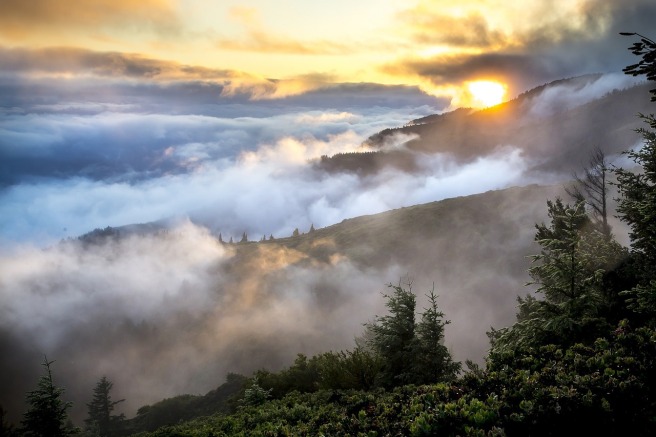
If you’re writing something set where you live, or close to it, then you know what the setting should look like. You know about when the sun sets in the winter, or the summer. You know what time of year it rains the most. You know if the local coffee chain has been usurped by Starbucks or not.
But if you’re writing about somewhere else? Another part of the country, or another country completely? Getting details wrong can take a reader right out of the story. That sounds like a lot of pressure, I know, but it’s happened to me plenty.
The best example was an episode of Supernatural. I’ve lived in Michigan for most of my life, and that particular episode was set in Ypsilanti at Christmas. This abnormally warm winter season right now notwithstanding, nearly any part of Michigan at Christmas should have snow on the ground, if not snow piled halfway to the windows. We get a lot of snow.
I know the show is based in Vancouver. I know they shoot in the wet and rainy part of Canada…but seriously. Rainy Christmas doesn’t read right to a local.
And as a writer, you don’t have to worry about the realities of shooting on location on a budget. So you should really get it right.
- Need to know when the sun is up where your characters are? Then timeanddate.com has you covered. Enter the location, date (approximate is fine if you’re not using exact date for your current project), and out spits sunrise and sunset times. Or the phases of the moon, if you need that instead. I’m sure I haven’t even discovered half the things here that would help me make my settings more accurate, but I’ve been using it for the sun ever since I found it. (I wish I’d known about it for What We Need to Survive, alas, but the times in #2 and #3 will be completely in line with the real world.)
- Not familiar with the general weather patterns in the area of your setting? Weather Underground has you covered with historical weather data. For example, I now know that Detroit was mostly cloudy with temperatures in the mid-70s on August 10, 2011. Yeah, that’s really specific, but sample some days from any given time period to get an idea of what kind of weather to include.
- That’s all great, I hear you saying, but what does (insert name of town here) look like? Google Earth Satellite, my friends. I planned the route Paul + Co. took through WWNTS entirely on Google Maps, then picked Street View locations to see the lay of the land. This stretch of the road is heavily forested, this part is mostly farmland, and so on. One-hundred-percent accuracy isn’t necessary–that’s what the disclaimer about places being used fictitiously is for–but if you try to tell someone from Kansas that their home town is in a mountain range, they might not believe you.
- Using recognizable chains of stores or restaurants? Do a location search on their website to see how far they really spread. My Starbucks example isn’t necessarily the best one, because they really are close to everywhere–but you wouldn’t find a Zaxby’s in Michigan. (I know, I checked. The closest one I could find was in Indianapolis, and that actually surprised me, because I thought they were only in the South–my first visit to a Zaxby’s was in Georgia.)
Wow! So many details. I have to say that, to some extent, this is why I enjoy writing post-apocalyptic worlds because it allows you a blank slate. Additionally, I think it’s why a lot of places pick nondescript locations for books because it is such a big point for readers.
P.s. You are VERY likely to find a Biggby in Michigan, though. Yum! So happy their coffee is WAY better than Starbucks. *seriously misses Biggby coffee* 😦
LikeLike
I see their billboards on the highway sometimes, but I don’t think there’s one in striking distance of me. Doesn’t matter, I don’t like coffee anyway!
LikeLiked by 1 person
0.0 WHAT?! You don’t like coffee? But… but… how?! *dies*
LikeLike
Tea, all the way. Black, green, herbal, it’s the best.
LikeLiked by 1 person
I mean, I like tea as much as the next person, but coffee just has such a unique taste! Oh well. Can’t covert everyone! :p
LikeLike
Great post! I was having a bit of trouble writing a certain scene in my book, as it was to be set in New York, but I have never been there, let alone to America! I’ve been tryng to figure out what the ‘atmosphere’ would be like. I think I’ll need to talk to some locals! But let’s just say, thank goodness for google street view!
LikeLiked by 1 person
Thank you! Talking to locals is definitely the next best thing to going there yourself–hearing their stories and getting a sense of place through those is such a huge help. And yeah, failing that, all hail Google Street View!
LikeLike